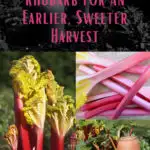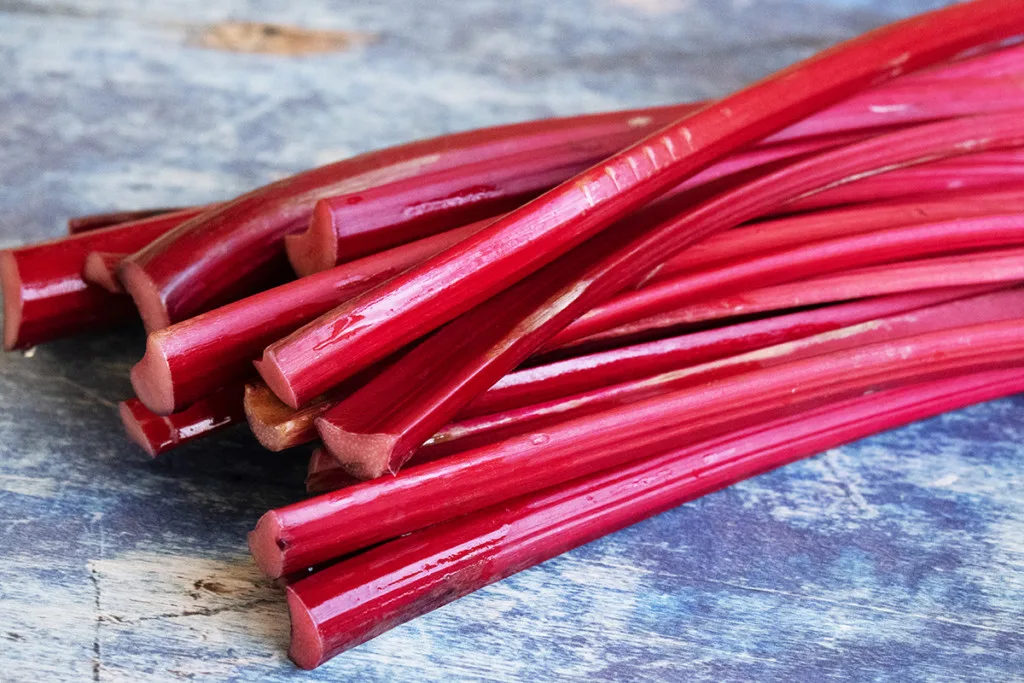
Rhubarb is one of the best known edible perennials, and a great choice for many gardens. It is typically a low-maintenance plant that will not require a huge amount of care.
If planted in a suitable spot, it should provide a bountiful yield year after year, sometimes for decades. On the Rural Sprout Facebook page, we’ve had a number of comments from readers who are still enjoying harvests from the same rhubarb plant 40+ years after planting.
If you want to obtain as high a yield as possible, there are certain things you can do. Learning how to force rhubarb will encourage earlier and greater growth of tender stems that you can enjoy using in the kitchen in a range of different ways.
What You Need to Know About Rhubarb
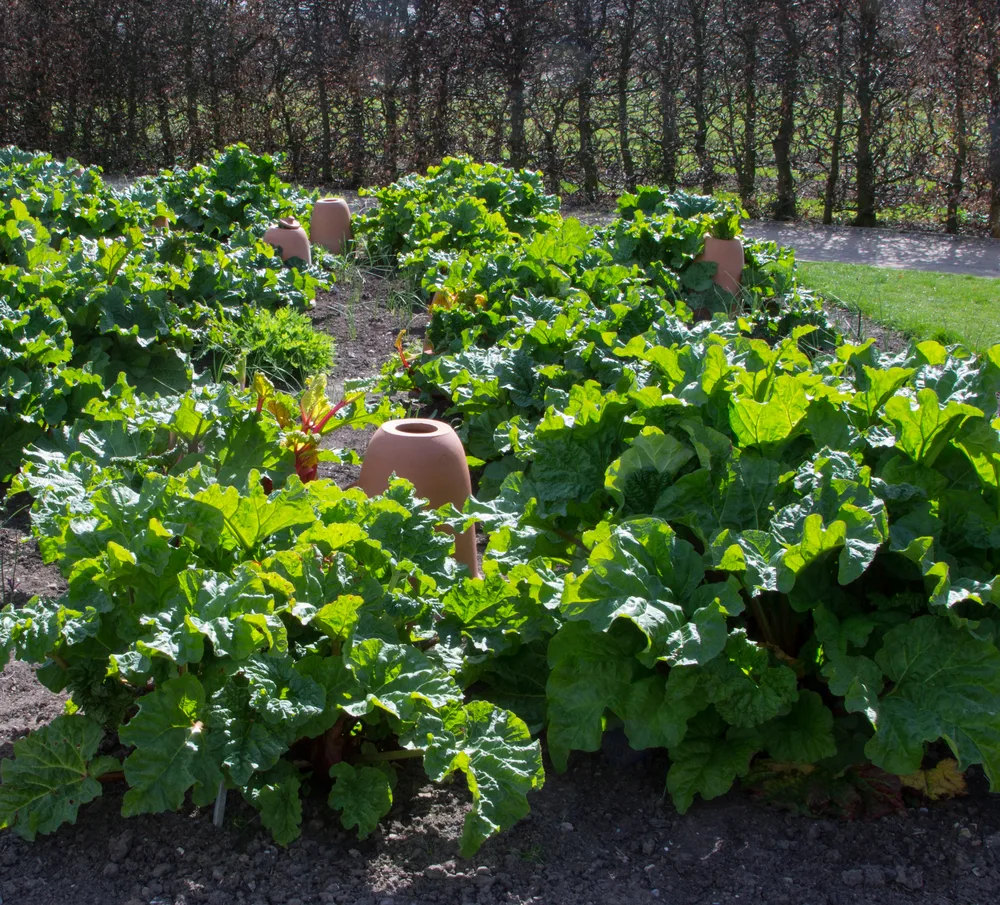
Rhubarb is a kitchen garden favourite but it is often rather neglected and misunderstood.
Often used more like a fruit, rhubarb is actually a perennial vegetable. It arrives much earlier in the year than most fruits do so it can plug in a gap in the home-grown food calendar.
Rhubarb should be grown in an open, sunny position with fertile, moist but free draining soil. Avoid frost pockets and any areas that become waterlogged in winter.
Typically, dormant crowns are planted some time from fall through spring. Plant it so that the tip of the crown is just visible above soil level. Make sure you leave a spacing of around 30-35 inches between plants.
You can also grow rhubarb in pots, providing that they are at least 20 inches deep and 20 inches wide.
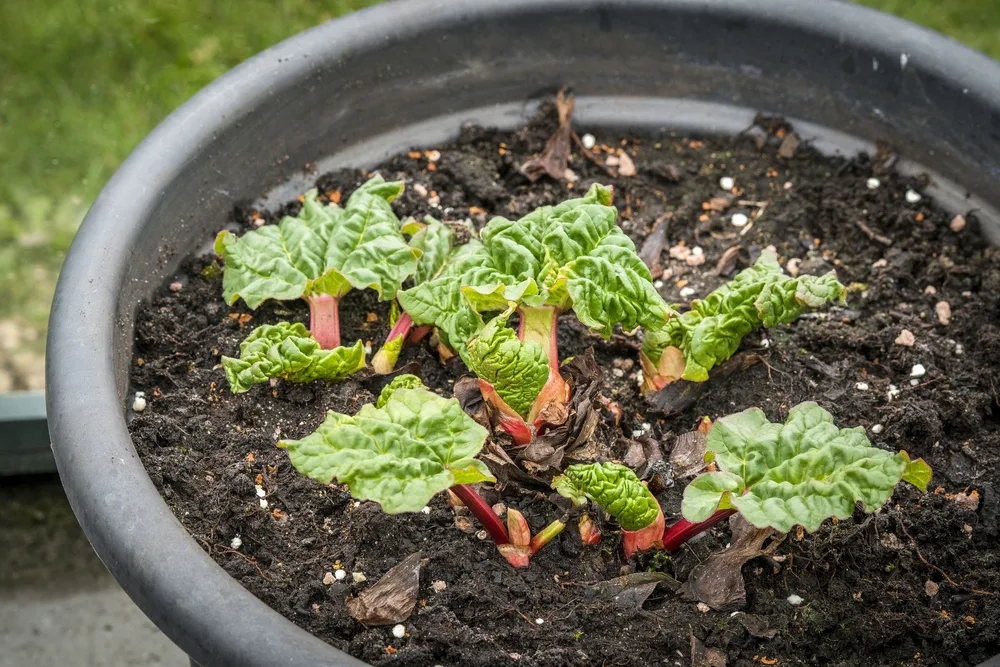
Rhubarb can be a great addition to an edible perennial bed or border. It can grow well alongside other perennial plants – such as perennial onion and garlic varieties. Rhubarb also deters whiteflies with its scent, and so can be a beneficial companion for brassicas.
Plant strawberries around your rhubarb, and they will form a beneficial ground cover, keeping weeds at bay and keeping moisture in the soil.
Though the stems are a delicious edible yield, it is important to note that the leaves and other parts of the plant are poisonous. So make sure you cut the leaves from the stems before you eat them.
The leaves can be put to use in many good ways. Here are seven of the best ideas for using rhubarb leaves.
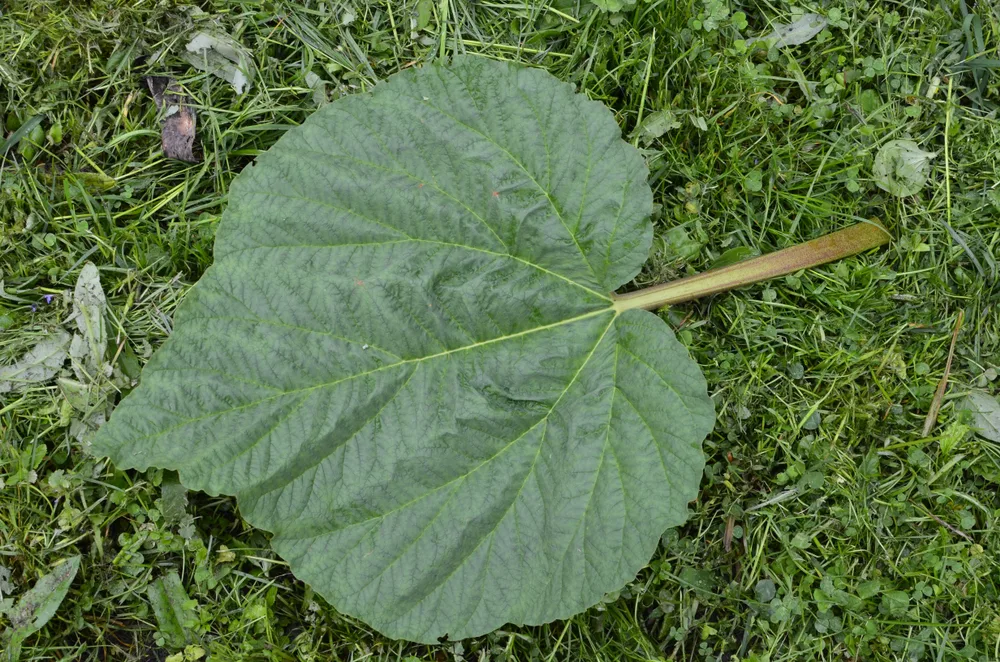
Rhubarb can usually be harvested through spring, to around June. But forcing brings the harvest forward – usually by around 3 weeks to a month or so.
What Does it Mean to Force Rhubarb?
‘Forcing’ rhubarb is not about shouting at or cajoling it to try to make it do something it does not want to do. Though in a certain light it could perhaps be viewed as rather ‘mean’!
When we force rhubarb, we simply cover the crown to exclude light.
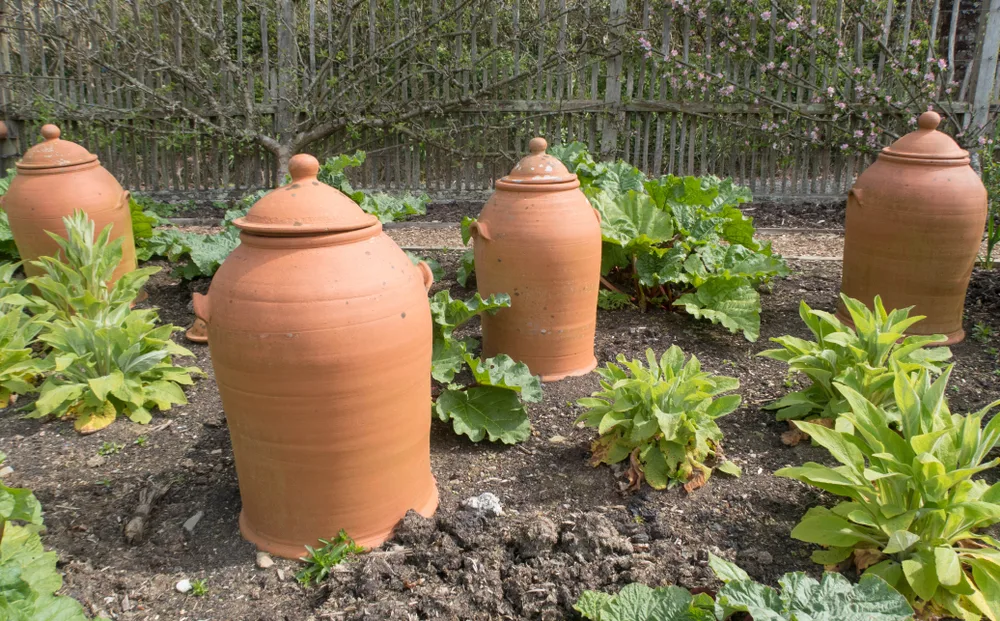
This encourages the plants to make growth earlier, and put forth pale, tall juicy stems. Essentially, we are putting some strain into our plants to make them do what we want them to do, and produce food for us sooner.
Why Force Rhubarb?
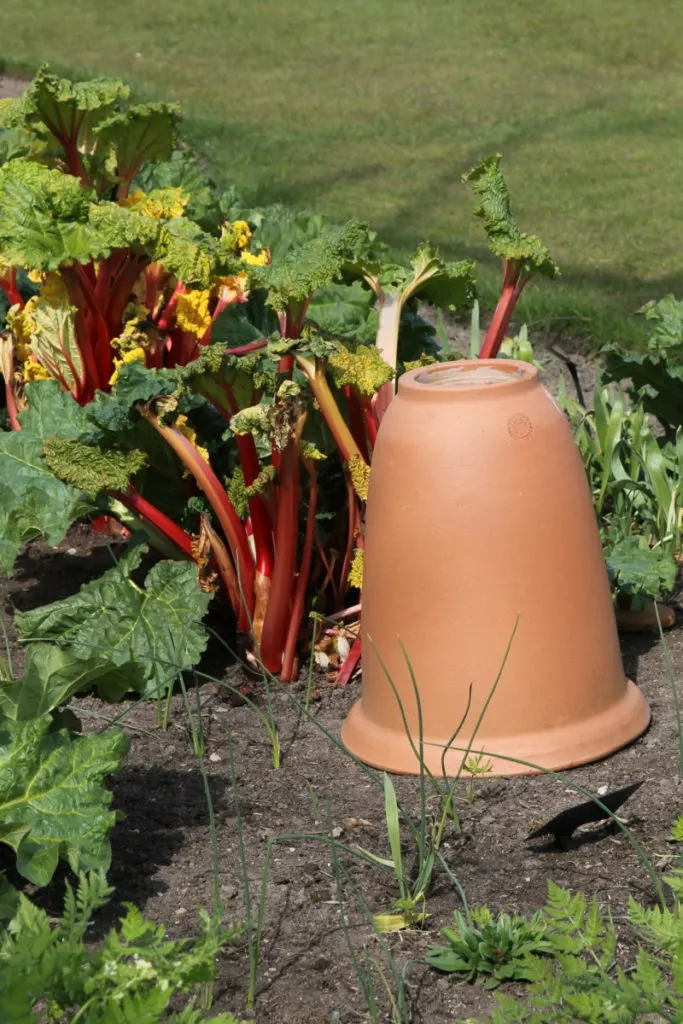
Forcing rhubarb means that we can harvest the pale long stems when they are 20 or 30cm long, and enjoy them much earlier than we would otherwise be able to do.
The benefit is that the yield arrives when there is not a huge amount of food available from the garden. This is a yield we can obtain during what was historically known as the ‘hungry gap’. This was the time between winter stores running low, and late spring/ early summer harvests.
The forced stems are tender and juicy, and some say that they are superior in taste to those grown in the sun that arrive a little later.
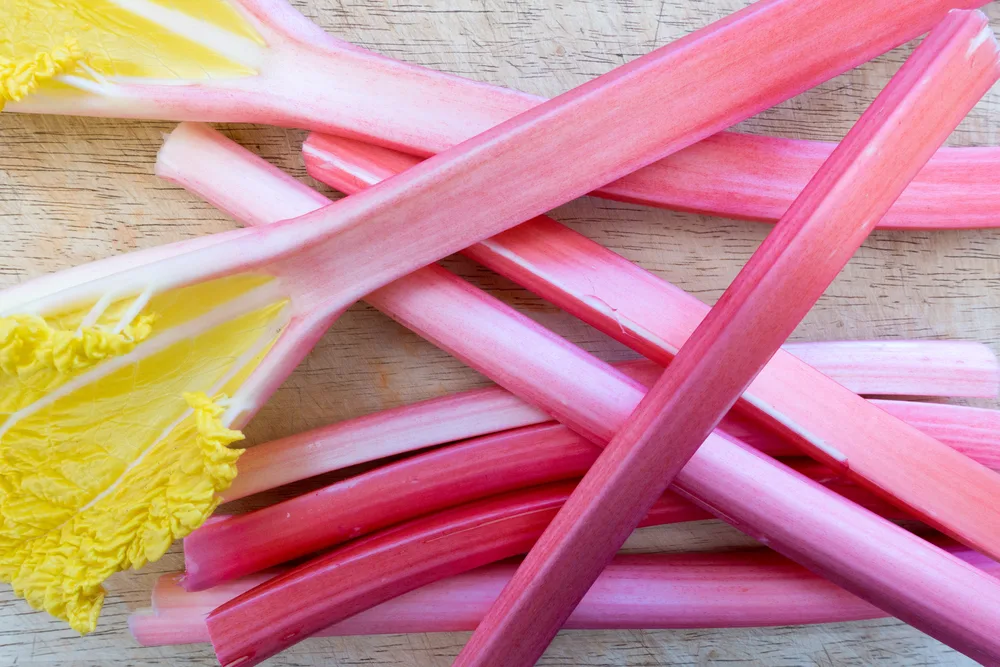
One thing to note, however, is that forcing rhubarb may compromise future growth to a degree. So this is something that should only be tried with mature, fully established plants. Young plants may not have enough stored energy to produce these early stems.
You should also avoid forcing the same plant over two consecutive years, as this may weaken the plant too much.
When To Force Rhubarb
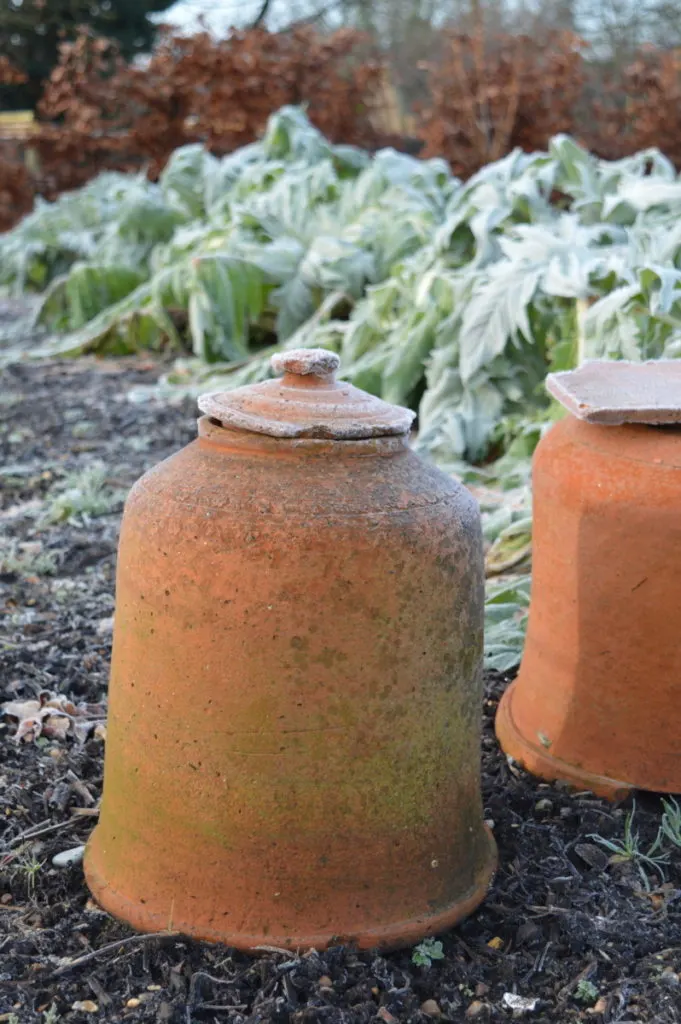
Forcing rhubarb is something that you will do in late winter, so that you can enjoy an early crop in the spring. Though you can start the process as early as November or December, it is usually something that gardeners will turn their hands to in January or February.
Forced rhubarb is typically enjoyed over a few weeks some time between January and April, beginning around 8 weeks after the forcing process began.
How To Force Rhubarb – 6 Steps
The process of forcing rhubarb really could not be simpler. Here is a step by step guide to walk you through it:
1. Identify
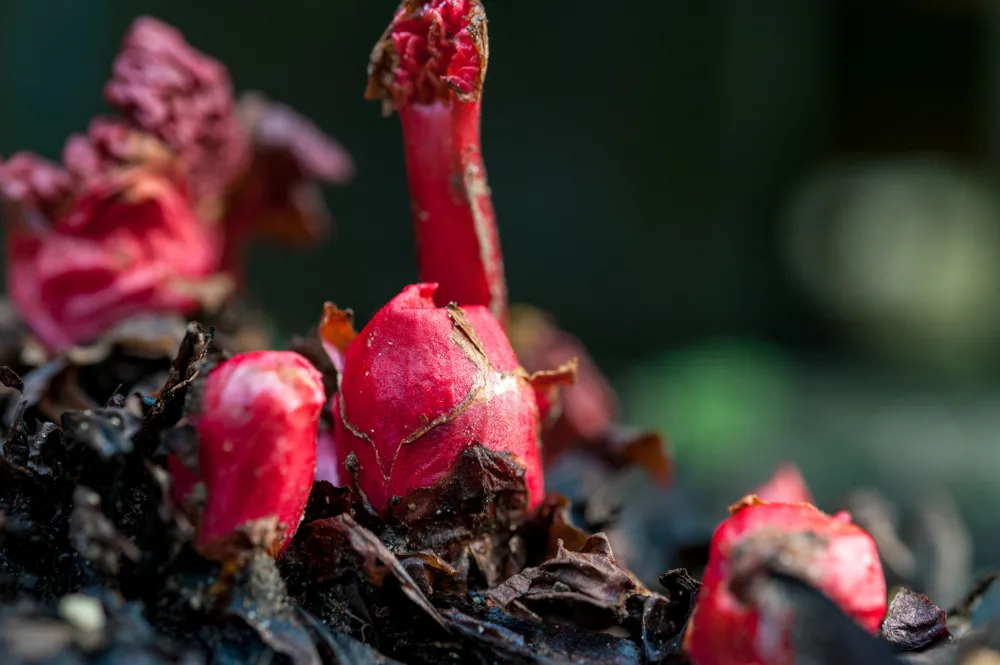
Identify a mature rhubarb crown that you would like to force.
2. Clear
Clear the area around the base of the crown, removing dead leaves and any weeds that have accumulated.
3. Mulch
Add a thick mulch of homemade compost or well-rotted manure around the plant. This will boost the nutrient levels in the soil and help make sure that the plant can grow well. But make sure you do not bury the crown or it can rot.
4. Cover
Find something to cover your rhubarb plant. You might use a bin, a large plant pot, or another reclaimed container of some kind. If using a plant pot, remember to plug the holes in the base to exclude all the light. Remember, the goal is to exclude light, so avoid using a clear or light coloured vessel.
Traditionally, the below terracotta rhubarb forcing jars have been used, but they are difficult to source and the same results can be achieved with a tall upturned plant pot.
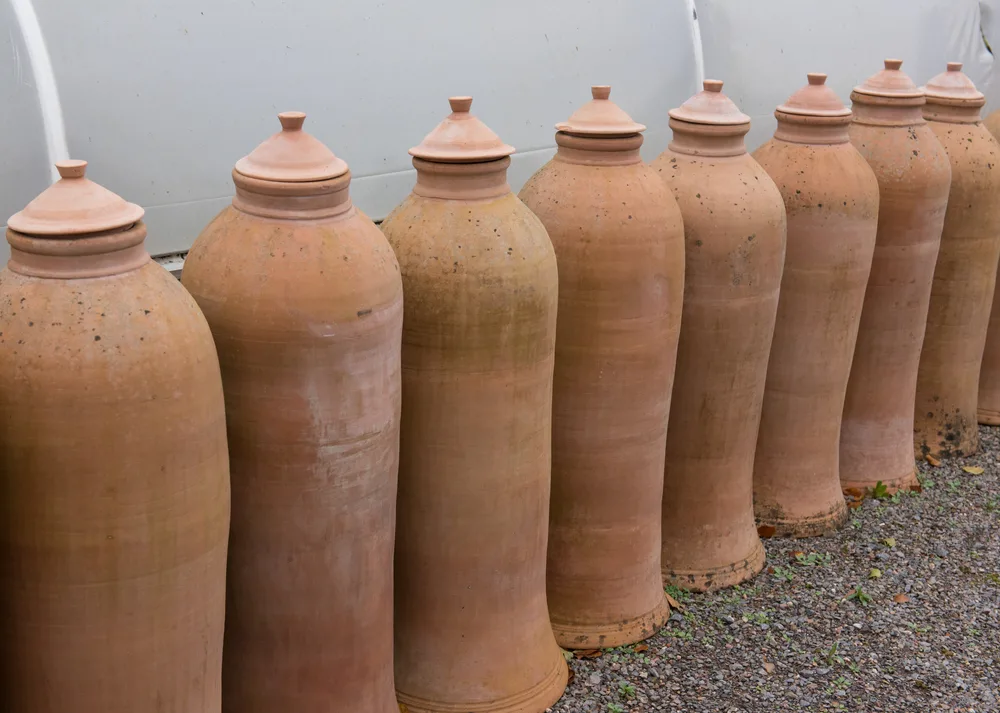
5. Insulate
In colder areas, and to speed up the process, it is also a good idea to insulate the outside of the container you have chosen to exclude the light. You could use reclaimed materials like bubble wrap from a package you have received.
6. Enjoy
Once 8 weeks or so have elapsed, look underneath the covering container. You should see a number of pale stems.
Your forced rhubarb will look like the rhubarb on the left on the image below. On the right is conventionally grown rhubarb with the lush green foliage.
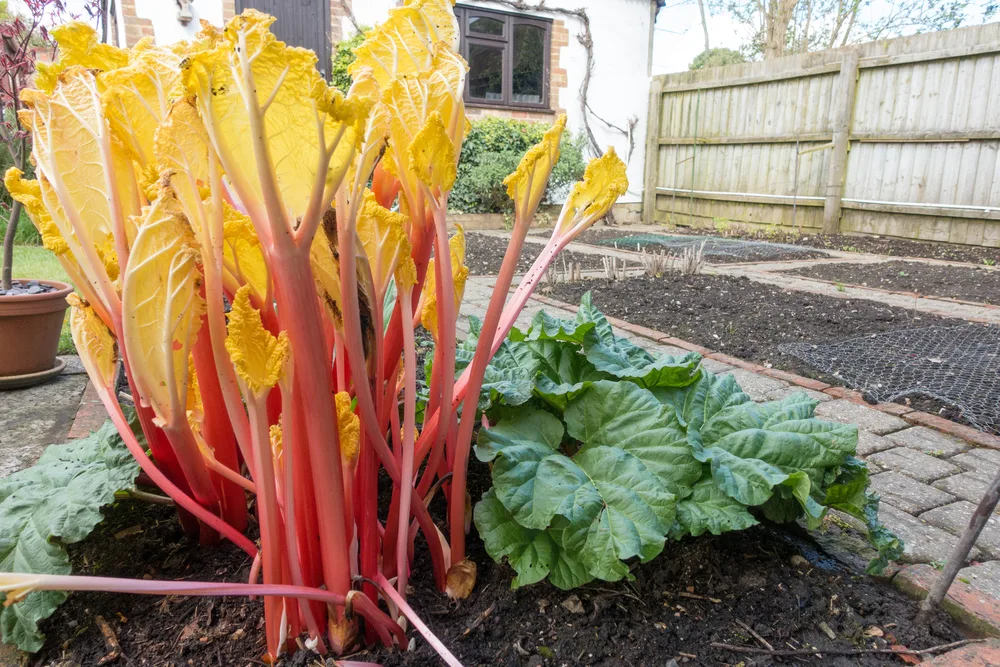
Gently pull the rhubarb stalks away from the base and prepare them and eat them in whatever way you wish. We share some rhubarb recipe ideas below.
Read Next:
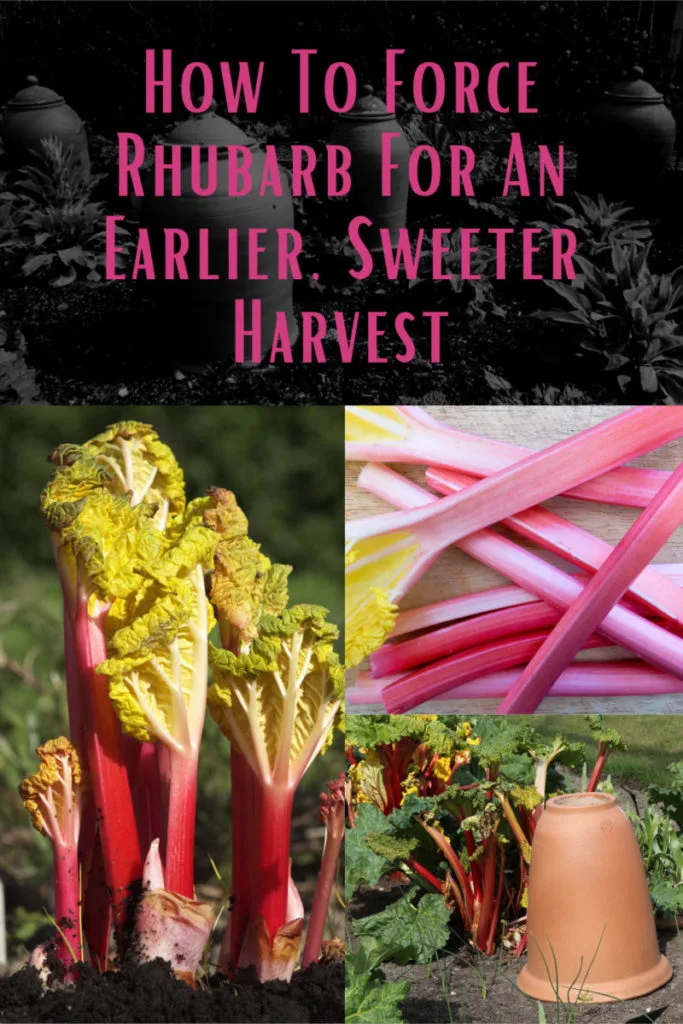

Get the famous Rural Sprout newsletter delivered to your inbox.
Including Sunday ramblings from our editor, Tracey, as well as “What’s Up Wednesday” our roundup of what’s in season and new article updates and alerts.


